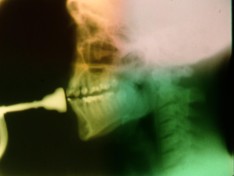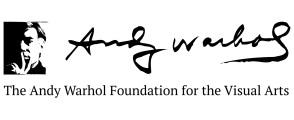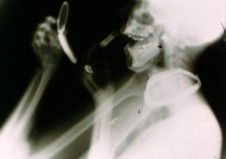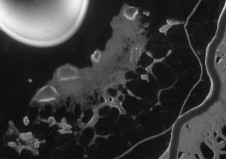Experimentations 8: Beautiful Science

"Studies in Diagnostic Cinefluorography," By Dr. James Sibley Watson, and 'Sanctus," by Barbara Hammer
Los Angeles Filmforum presents
Experimentations: Imag(in)ing Knowledge in Film, Program 8
Beautiful Science: Re-contextualizing Science Film into Film Art
Sunday November 10, 2024, 7:30pm
The utilization of prior footage, recontextualized, is a common practice in experimental filmmaking. This program highlights two supreme examples, both drawing on earlier “science” films utilizing remarkable photographic techniques to create new art, one utilizes cine-radiography to examine the interior of the human body in action; the other a meditative tribute to one of the primary pioneers of microscopic and time-lapse photography. In a research visit at the George Eastman Museum in Rochester, Barbara Hammer came upon some of the reels of x-ray films, or cinefluorography, by Dr. James Sibley Watson, also known in the film world for his films The Fall of the House of Usher (1928) and Lot in Sodom (1933). Watson was also a doctor who developed a method of filming the innards of people by x-rays (most likely unhealthy large doses). There are over 233 x-ray films at the George Eastman Museum, most of which are not preserved, digitized, or available for viewing. Hammer utilized the available footage, tinting, layering, and more, to create one of her masterworks, a humorous and pensive meditation on the human body, its fragility and resilience. F. Percy Smith, working with Mary Field, was a key innovator in microcinematography and time-lapse photography, creating phenomenal close-up images of plants, insects, molds, and more, used in educational films distributed in the United Kingdom in the first half of the 20th century. Minute Bodies: The Intimate World of F. Percy Smith, made by Stuart A. Staples of the band tindersticks (whom also score the film with Christine Ott) removes the wry educational narration of Smith’s original films and combines excerpts in new ways to create a sense of wonder at the camerawork while also rending the living things in the films into near abstract yet fantastic forms.
Notes and program by Adam Hyman
Experimentations: Imag(In)ing Knowledge in Film is Filmforum’s expansive film series and upcoming publication that investigates the ways that experimental and scientific films produce and question the visualization of the world. Combining artist films utilizing scientific imagery, science and natural history films, and films of indigenous and traditional knowledge, the series examines how science, nature, and technology films shape our understanding of humans, nature, gender, knowledge, and progress. The multi-venue public screening series presents analog and digital time-based media incorporating diverse scientific and experimental film traditions from across the globe. The series will include eighteen screenings between September 2024 and February 2025, with films and digital works from 1874 to today from around the world, multiple guests, panels and wonderful collaborations that will reveal the possibilities and circumstances of cinema in this realm.
Experimentations: Imag(in)ing Knowledge in Film is among more than 70 exhibitions and programs presented as part of PST ART. Returning in September 2024 with its latest edition, PST ART: Art & Science Collide, this landmark regional event explores the intersections of art and science, both past and present. PST ART is presented by Getty. For more information about PST ART: Art & Science Collide, please visit: pst.art.
Major support for Experimentations: Imag(in)ing Knowledge in Film is provided by the Getty Foundation and The Andy Warhol Foundation for the Visual Arts. Additional Support from the Los Angeles County Board of Supervisors through the Los Angeles County Department of Arts & Culture, and the Department of Cultural Affairs, City of Los Angeles.
Tickets: $10 general; $5 for students/seniors, free for Filmforum members


Studies in Diagnostic Cinefluorography
By Dr. James Sibley Watson
1947-1955, B&w transferred to digital, silent, 6 min.
World premiere of newly preserved and scanned copy, from the George Eastman Museum

Sanctus
Sanctus
By Barbara Hammer
1990, color/b&w, sound, 19 min.
Sound composition by Neil B. Rolnick.
"In her most recent films, ENDANGERED and SANCTUS, Barbara has addressed the co-fragility of both human existence and the film emulsion, the artist's raw material onto which she creates images. I have just recently screened the completed print of SANCTUS, and I was overwhelmed by it. The film is visually exquisite, and replete with symbolic meaning. She has transformed 'found footage' - scientific x-ray films from the 1950s - into a lyrical journey, transforming this raw material into a celebration of the body as temple."

Magic Myxies
Magic Myxies
By F. Percy Smith and Mary Field
1931, 16mm transferred to digital, B&w, sound, 8 min., 6 sec.
Made by British Instructional Films for the series The Secrets of Nature, the film uses time-lapse and micro-cinematography to present the life cycle of slime molds with a factually dubious narration.
“The Monthly Film Bulletin's Science Committee was outraged by this film - not for its photography, which it admits is beautiful, but for its commentary. Its review, although very seriously lacking a sense of humour, has a point. The film, released in 1931 (thus the early days of sound), is perhaps inappropriately jolly, and it certainly lacks that sober scientific tone that we expect of British wildlife film. It is much more reminiscent of the gung-ho voice of the newsreel. Worse still, it is inaccurate. As the reviewer fumes "'Myxie' is not too objectionable a shortening of the ugly term myxomycete [did the editor know they already had a non-Latin name, 'slime fungi'?] but the suggestion that a myxie is an animal at one point and a vegetable at another is absurd... Further we should like to know how a myxie can be said to be bad tempered, and why accelerated photography should confer on it the power to 'quiver with delight'."
Anthropomorphising the natural world has always been frowned on by British wildlife filmmakers (not least Sir David Attenborough) and while we may enjoy the ebullient commentary - which certainly helps to sell a difficult subject - in the end, we probably have to agree with the verdict of the Science Committee.” – Bryony Dixon, British Film Institute

Minute Bodies: The Intimate World of F. Percy Smith
Minute Bodies: The Intimate World of F. Percy Smith
Directed by Stuart A. Staples
Co-producer and editor Dave Reeve
2016, digital b&w, sound, 55 min.
Trailer: https://vimeo.com/275657775
This meditative, immersive film by tindersticks' Stuart A. Staples is a tribute to the astonishing work and achievements of naturalist, inventor and pioneering British filmmaker F. Percy Smith (1880-1945).
Based in a studio in north London in the early years of the 20th century, Percy Smith developed the use of time-lapse, animation and micro-photographic techniques to capture nature's secrets in action. He worked in a number of public roles, including the Royal Navy and British Instructional Films, Smith was prolific and driven, often directing several films simultaneously, apparently on a mission to explore and capture nature's hidden terrains.
Minute Bodies: The Intimate World of F. Percy Smith is an interpretative work that combines Smith's original film footage - preserved within the BFI National Archive - with a new contemporary score by tindersticks with Thomas Belhom and Christine Ott. It creates a hypnotic, alien yet familiar dreamscape that connects us to the sense of wonder Smith must have felt as he peered through his own lenses and saw these micro-worlds for the first time.
"The reaction of his contemporary audience can’t have been a million miles from ours now: the dawning realisation that our mental maps of the world are just provisional sketches of a far vaster and weirder territory, the familiar world as we imagine it just one wafer-thin slice of something ultimately unknowable. Watching infinitesimal, perfectly spherical fungi all bloom at exactly the same time, I kept imagining the Dutchmen who invented lenses at the birth of science in the 1600s, looking through early microscopes at fleas and ticks for the very first time, and imagining they had just opened a window onto the world of demons and occult dimensions of reality, so vast was the shift in perspective, so fundamentally alien and unfamiliar these new layers of existence seemed.
"The humanising of this utterly unfamiliar world is the film’s subtle masterstroke: the retro-fitted score by tindersticks and Christine Ott is a joy, and gives the unapproachable strangeness of what we’re watching a human, emotional dimension. In one section, eerie antique organ sounds and ponderous vibraphones evoke the brave new world of mid-20th century sci-fi, an association that seems apt – after all, these were alien worlds being discovered by the technology of the atomic age too – wondrous, not a little monstrous, weirdly fantastical. In another section, the grainy, fuzzy analogue bass notes of an early synth somehow perfectly describe the completely alien throb of a pulsating, liquid mould that branches out and flows along vein-like paths looking for new food. Later, a multitude of tiny tadpole-like forms riggle round exuberantly to a jazzy score, evoking the energy of the will-to-life at its most abstract; it made me imagine Mondrian’s “Broadway Boogie-Woogie” for some reason, and my toddler pointed at them excitedly and shouted “fish!”" - Michael Smith caught By the River, https://www.caughtbytheriver.net/2017/07/natural-history-bfi-tindersticks-stuart-a-staples-the-intimate-world-of-f-percy-smith/
